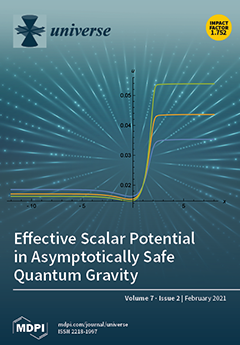The slow neutron-capture process (
s-process) efficiency in low-mass AGB stars (1.5 < M/M
< 3) critically depends on how mixing processes in stellar interiors are handled, which is still affected by considerable uncertainties. In this work, we compute the evolution
[...] Read more.
The slow neutron-capture process (
s-process) efficiency in low-mass AGB stars (1.5 < M/M
< 3) critically depends on how mixing processes in stellar interiors are handled, which is still affected by considerable uncertainties. In this work, we compute the evolution and nucleosynthesis of low-mass AGB stars at low metallicities using the MESA stellar evolution code. The combined data set includes models with initial masses M
/M
and 3 for initial metallicities
and
. The nucleosynthesis was calculated for all relevant isotopes by post-processing with the NuGrid mppnp code. Using these models, we show the impact of the uncertainties affecting the main mixing processes on heavy element nucleosynthesis, such as convection and mixing at convective boundaries. We finally compare our theoretical predictions with observed surface abundances on low-metallicity stars. We find that mixing at the interface between the He-intershell and the CO-core has a critical impact on the
s-process at low metallicities, and its importance is comparable to convective boundary mixing processes under the convective envelope, which determine the formation and size of the
13C-pocket. Additionally, our results indicate that models with very low to no mixing below the He-intershell during thermal pulses, and with a
13C-pocket size of at least ∼3 × 10
M
, are strongly favored in reproducing observations. Online access to complete yield data tables is also provided.
Full article





